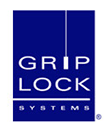Industry News
Architecture Billings Index Shows Nominal Increase
March 23, 2011
During the first two months of 2011 the Architecture Billings Index (ABI) is not exhibiting the strength of business conditions that were seen in the final quarter of 2010. As a leading economic indicator of construction activity, the ABI reflects the approximate nine to twelve month lag time between architecture billings and construction spending. The American Institute of Architects (AIA) reported the February ABI score was 50.6, up slightly from a reading of 50.0 the previous month. This score reflects a modest increase in demand for design services (any score above 50 indicates an increase in billings). The new projects inquiry index was 56.4, compared to a mark of 56.5 in January.
“Overall demand for design services seems to be treading water over the last two months,” said AIA Chief Economist, Kermit Baker, PhD, Hon. AIA. “We’ve been preaching patience and cautious optimism for a full recovery because there continues to be a wide range of business conditions for architecture firms that are also influenced by firm size, practice specialties and regional location. We still expect the road to recovery to move at a slow, but steady pace.”
Key February ABI highlights:
◦Regional averages: Midwest (55.3), South (50.1), West (49.1), Northeast (46.4)
◦Sector index breakdown: commercial / industrial (55.0), mixed practice (51.3),
◦multi-family residential (49.7), institutional (48.9)
◦Project inquiries index: 56.4
About the AIA Architecture Billings Index
The Architecture Billings Index (ABI), produced by the AIA Economics & Market Research Group, is a leading economic indicator that provides an approximately nine to twelve month glimpse into the future of nonresidential construction spending activity. The diffusion indexes contained in the full report are derived from a monthly “Work-on-the-Boards” survey that is sent to a panel of AIA member-owned firms. Participants are asked whether their billings increased, decreased, or stayed the same in the month that just ended as compared to the prior month, and the results are then compiled into the ABI. These monthly results are also seasonally adjusted to allow for comparison to prior months. The monthly ABI index scores are centered around 50, with scores above 50 indicating an aggregate increase in billings, and scores below 50 indicating a decline. The regional and sector data are formulated using a three-month moving average.









































